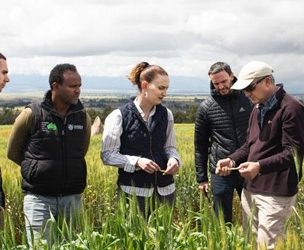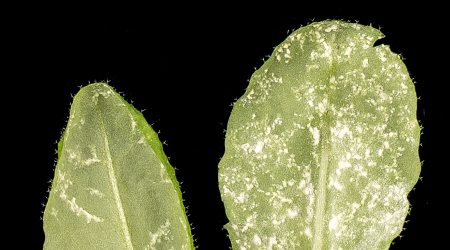MIA transport protein no longer missing in action

John Innes Centre scientists have made a breakthrough in understanding how valuable anti-cancer compounds are produced in the Madagascar Periwinkle (Catharanthus roseus).
Several specialised plant compounds called monoterpene indole alkaloids (MIAs) have important medicinal properties. Although scientists have made progress in understanding how plant enzymes transform building-block chemicals into a wide diversity of MIAs, little is known about how these components are transported.
Many medicines used in clinical practice today have been developed from specialised compounds occurring naturally in plants – yet plants remain a vastly untapped resource for the discovery of other important and life-saving drugs.
Research in Professor Sarah O’Connor’s laboratory at the John Innes Centre focuses on understanding the metabolic pathways in which these specialised plant compounds are made. The team is particularly interested in the monoterpene indole alkaloids, or ‘MIAs’ for short; a large group of more than 3000 related chemicals, which includes the effective anti-cancer agent vincristine, and the anti-malarial drug quinine.
Professor O’Connor said: “By exploring the diversity of MIA compounds it’s possible that we will find new ones with useful pharmacological activity – but by understanding how they are made, we may also be able to engineer biological systems to scale-up the production of these compounds for industry, and/or tweak the biochemical pathways to improve their medicinal properties.”
In the new study published in the scientific journal Nature Plants, Professor O’Connor and her team, working with colleagues at institutes in Denmark and France, describe a recent breakthrough in understanding the pathway of MIA compounds produced in the Madagascar Periwinkle (Catharanthus roseus).
Dr Richard Payne, a former PhD student in Sarah’s group and first author of the study explained: “Strictosidine is a key intermediate compound made during the production of MIAs. Enzymes act on strictosidine in different ways to modify the basic structure and produce a wide range of MIAs. We already knew that strictosidine is found in the plant cell vacuole, and that it ends up in the nucleus for the next step of the transformation process. How strictosidine gets from the vacuole to the nucleus, however, was a mystery – until now.”
By exploring a map of C. roseus’ transcriptome, Dr Payne and colleagues pinpointed three candidate proteins that they thought might be linked to the transport of strictosidine from the vacuole to the nucleus. Then, using virus-induced gene silencing (VIGS) and in vitro characterisation in Xenopus laevis (frog) eggs, the team honed in on one of these proteins, called CrNPF2.9.
Dr Payne said: “CrNPF2.9 is a protein in the nitrate and peptide transport family (NPF). It is the first time that a protein in this family has been implicated in the MIA biosynthesis pathway, so that in itself was a new discovery. However, our VIGS and Xenopusoocyte experiments further confirmed that this protein affects strictosidine accumulation, and that it’s localized to the vacuole membrane. This is exactly where we would expect it to be if it was indeed involved in moving strictosidine from inside the vacuole to outside of it. Another piece of the MIA synthesis puzzle has been solved.”
This research was funded by the European Research Council, and the Biotechnology and Biological Sciences Research Council (BBSRC), with contributions from the Danish National Research Foundation, the innovation Fund Denmark and the Région Centre, France.


